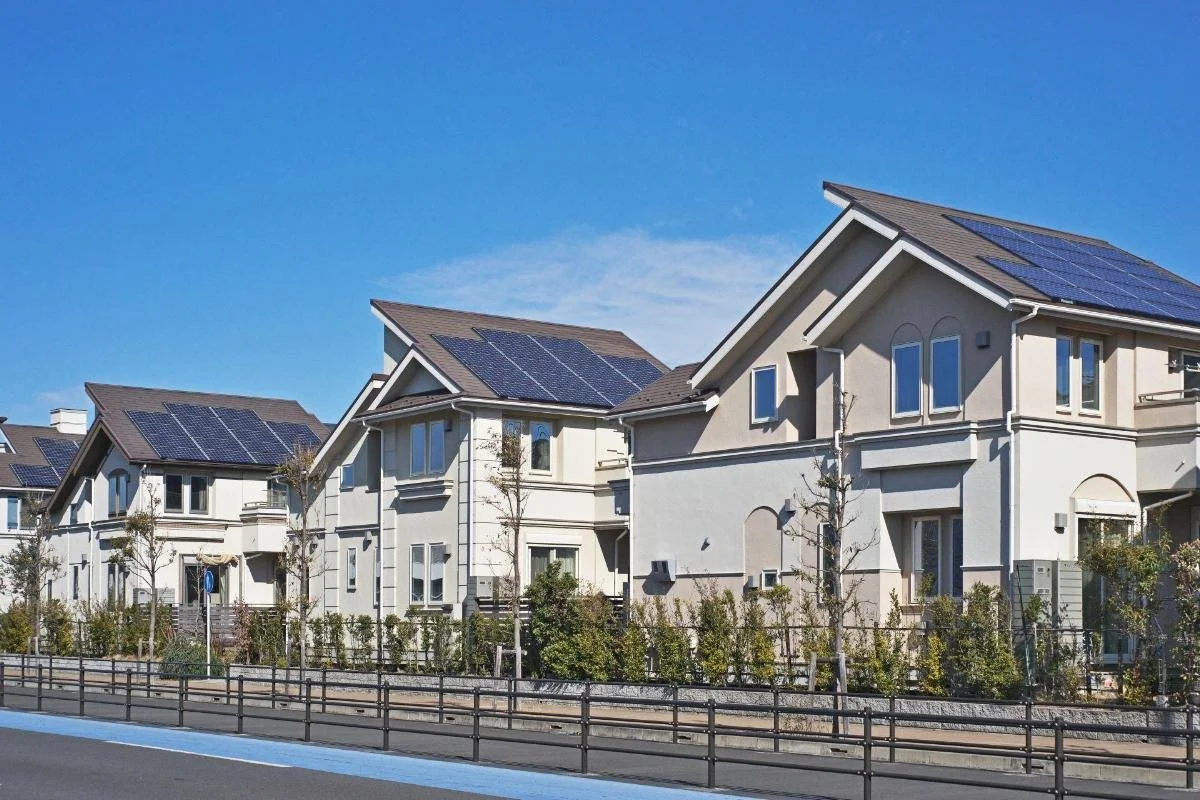This article explores the power of cross-sector collaboration in promoting sustainable housing solutions across the Asia-Pacific region, emphasizing the importance of sustainable architecture and net-zero living.
Imagine a world where every home contributes to the better health of the planet. In the Asia-Pacific region, this vision is becoming a reality through the power of collaboration. We looked into how diverse sectors are uniting to redefine the landscape of sustainable housing.
The Power of Unity in Addressing Housing Challenges
The Asia-Pacific region is witnessing an unprecedented challenge in housing affordability and sustainability, exacerbated by rapid urbanization and environmental concerns. In response, cross-sector collaborations are emerging as a beacon of hope, demonstrating how joint efforts can lead to innovative solutions.
Combining Expertise for Sustainable Solutions
For instance, in Japan, the collaboration between the government, private technology companies, and civil society organizations has led to the development of smart cities like Fujisawa Sustainable Smart Town, which places a strong emphasis on energy efficiency, community-based renewable energy, and sustainable living practices.
The smart town has its fair share of criticism regarding its urban model of only building for single-family households, but the model has also become a showcase of the power of combining governmental support, private sector innovation, and community engagement toward achieving common sustainability goals.
Community Partnerships for Inclusive Development
Furthermore, in countries like the Philippines, cross-sector partnerships are revitalizing community-based housing projects. The Tahanang Walang Hagdanan initiative, a non–government organization-led project supported by government grants and private donations, is a testament to the impact of collaboration.
It not only provides accessible housing for persons with disabilities but also incorporates sustainable architectural designs that minimize environmental impact, demonstrating the potential for inclusive, sustainable development when sectors unite with a shared vision.
Diverse Models, One Goal: Innovations in Housing Collaboration
From Singapore’s smart urban habitats to Indonesia’s community-based housing programs, the Asia-Pacific region is a tapestry of collaborative efforts aimed at sustainable living. These models showcase the essence of innovation, where cutting-edge sustainable construction materials and traditional designs merge to create housing.
These solutions are not only affordable but also a testament to the possibilities of a net-zero lifestyle. Through these partnerships, the journey toward sustainable housing is one marked by shared knowledge, resource efficiency, and a collective pursuit of environmental harmony.
Success Stories: Catalysts of Change in the Housing Sector
The stories of transformation across the region are both inspiring and instructive. Take, for example, the revitalization projects in urban slums that not only provide sustainable housing but also foster community development and social inclusion.
Dharavi’s Transformation: A Complex Journey
In Mumbai, the transformation of Dharavi from a vast slum to a planned urban area through the Maharashtra Housing and Urban Development Authority’s rehabilitation scheme showcases the complex challenge of urban development.
PHOTO: @ntshptl on Unsplash
Despite intentions to improve living conditions by replacing informal settlements with modern apartment blocks provided at no cost to slum dwellers, the project has faced criticism for overlooking the unique lifestyle and community dynamics of Dharavi’s nearly one million residents.
The transition from closely-knit, multifunctional communal spaces to dense, high-rise buildings disrupts the traditional social fabric and fails to accommodate the varied needs of the community, from shared spaces essential for daily activities to specific arrangements for local businesses.
Finding a Nuanced Approach
Addressing these concerns requires a nuanced approach to urban redevelopment that respects the diverse lifestyles within Dharavi. Proposals for mixed-cooperative housing, commercial units, and community amenities aim to preserve the slum’s organic community ties, but challenges persist, particularly for groups like Kumbharwada’s potters, whose livelihoods depend on specific spatial needs.
The future of Dharavi’s rehabilitation hinges on finding a balance that integrates residential, commercial, and communal functions, acknowledging the area’s industrious spirit and the indispensable role of its communal social patterns in the urban fabric of Mumbai.
These initiatives spotlight the objectives, outcomes, and profound impact of collaborative efforts on promoting housing affordability, enhancing resilience, and advancing towards sustainable, net-zero living.
Navigating the Waters: The Complexities of Collaboration
While the path of cross-sector collaboration towards sustainable housing presents remarkable opportunities, it’s not without its share of hurdles. From coordinating efforts across different sectors to aligning diverse objectives, the road can appear to be uphill.
For example, the Guangzhou BRT project in China, where the simultaneous inclusion of multiple interests like transport, urban development, and environment led to complexities and delays in implementation.
Yet, while the challenges are significant, they are not insurmountable, as evidenced by successful project completions. In the Guangzhou BRT’s case, effective management practices and continuous dialogue among stakeholders proved instrumental in bringing this vast project to fruition.
It demonstrates that with strategic management and unwavering commitment, cross-sector collaborative projects can successfully navigate through their inherent complexities, paving the way for sustainable housing and net-zero living spaces.
Learning from the Best: Inspirational Collaborations
As the saying goes, “a journey of a thousand miles begins with a single step.” In the context of sustainable housing, this adage rings true with the case studies above that highlighted not just the feasibility but the profound impact of cross-sector collaboration.
These success stories offer invaluable insights into the processes, strategies, and innovations that have paved the way for sustainable housing projects. They serve as beacons of hope and exemplars of what can be achieved when diverse sectors unite for a common good.
Join the Movement: Building a Sustainable Tomorrow Together
As we stand at the crossroads of urban development and environmental sustainability, the call to action is clear. It’s time to embrace the power of collaboration, to pool our resources, knowledge, and aspirations toward a shared vision of sustainable housing.
Whether you’re a policymaker, a business leader, or a concerned citizen, your role in this journey is critical. Together, we can transform the landscape of living across the Asia-Pacific, ensuring that every home is a step towards a brighter, greener future.
If you have a project in mind, we would love to hear about it and explore ways to work together. You may contact us here.
If you’re passionate about sustainable living and want to learn more, we recommend you dive into our article that’s filled with valuable insights. Take a look at Green Architecture: A Sustainable Solution to the Construction Sector’s Environmental Challenges.
Resources:
-
Fujisawa SST. Retrieved from https://fujisawasst.com/EN/
-
National Council on Disability Affairs. Tahanang Walang Hagdanan, Inc. Retrieved from https://ncda.gov.ph/tahanang-walang-hagdanan-inc/
-
Krees de Guia. Bridging Shelter and Sustainability: Achieving the SDGs Through Housing. Retrieved from https://billionbricks.org/updates/bridging-shelter-and-sustainability-achieving-the-sdgsnbspthrough-housing?rq=Housing
-
Faster Capital. Urban Revitalization. Retrieved from https://fastercapital.com/keyword/urban-revitalization.html
-
United Nations. Guangzhou bus rapid transit system | China. Retrieved from https://unfccc.int/climate-action/momentum-for-change/urban-poor/guangzhou-bus-rapid-transit-system#:~:text=The%20Guangzhou%20BRT%20is%20the,Bogota%27s%20BRT%2C%20Transmilenio%2C%20worldwide.
-
M. Martínez Euklidiadas. FUJISAWA SUSTAINABLE SMART TOWN: PLANNING FOR THE NEXT 100 YEARS. Retrieved from https://www.tomorrow.city/fujisawa-sustainable-smart-town/







